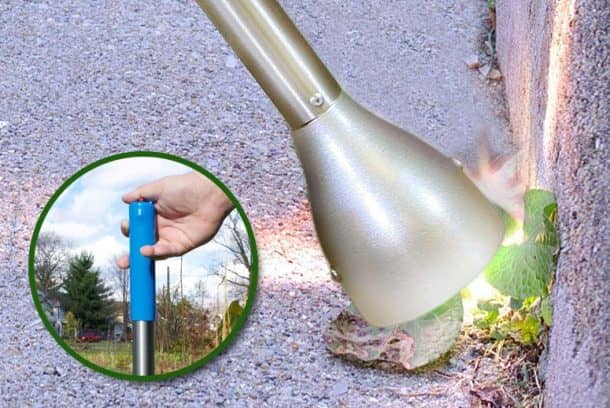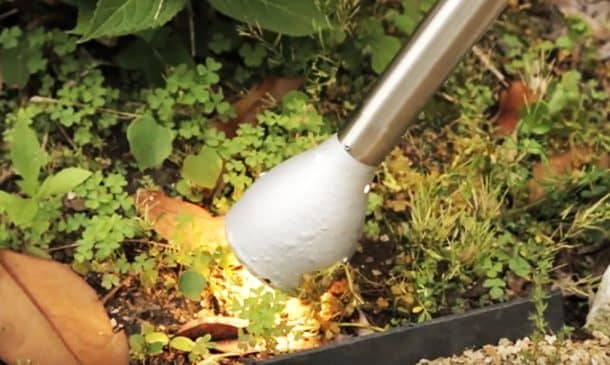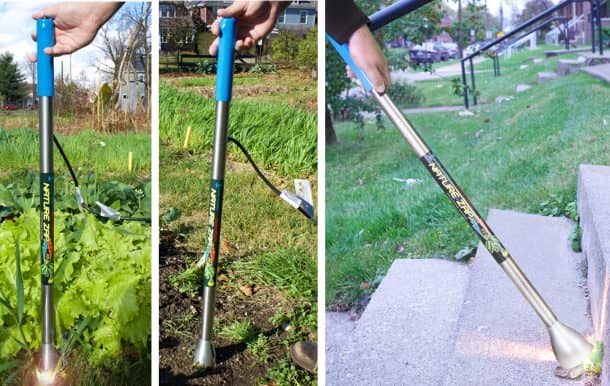NatureZap is a wand. No, its not the Harry Potter magic wand that will kill Death Eaters. It is a light wand that will kill unwanted vegetation – known as weeds – with beams of heat and blue light. The Air Force base in Southern California currently testing this device to remove weeds with heat and a concentrated beam of light without using harmful herbicides.
How does the wand work? It is a long, slender device that uses heat and high energy blue light to kill leaves and roots of weeds. The light only penetrates 2 inches deep in soil which means it only affects the weeds and not the healthy, useful plants. Affected plants die within 3 days and is effective on weeds like crabgrass, ragweed and dandelions.

“We’ve had a pretty good success rate,” said Jon Jackson, President of Global Neighbor that manufactured the device. “We get about a 70 to 80 percent die-back without regrowth.”
Danny Reinke, a scientist at Edwards Air Force Base, developed the device in collaboration with Global Neighbor. He said that NatureZap will enable the military to mitigate its use of harmful chemicals like pesticides under the Sikes Act passed for the protection of endangered species. He is working to power the device using batteries and can clear an area of the size of a softball field. The pilot version of NatureZap only used heat to kill the weeds.
“We’ve graduated since then,” said Jackson. “Even before we were with Edwards we spent a few years working with lasers and other things, trying to get ground penetration.”

Cadance Lowell, a professor at Central State University worked with Global Neighbor to test the device. Lowell stated that the device would kill a few plants, considering it disrupts the chloroplasts (organelles necessary photosynthesis to take place) and other stress damages.
“If it truly works, I think it will be very successful because change cannot come quickly enough in the world of pest management,” said researcher at the Center for Biological Diversity, Nathan Donley. “Most weed-killing chemicals in use today have been around for more than 50 years. Innovation is nonexistent in this realm.”
Donley was delighted to learn that it was the Air Force that was conducting the field tests for NatureZap.
“If the federal government can reduce its pesticide use, the money saved can be used to advance other conservation efforts,” he said. “Pesticides aren’t cheap, and a lot of costs of their use aren’t paid up front. They’re externalized to the community in terms of increased health care costs or environmental restoration.”

The traditional use of herbicides is dangerous as chemical toxicity can although solve a short-term problem but is responsible for lasting damage. Heat and light, alternatively, can still have a lasting impact without the toxicity. This is how natural light and heat help us get rid of weeds. Let us know what you think of this wand in the comments section!


